 by our College Data Analytics Team
by our College Data Analytics TeamBethune - Cookman University total enrollment is approximately 2,845 students. 2,614 are undergraduates and 80 are graduate students.
Male/Female Breakdown of Undergraduates
The full-time Bethune - Cookman University undergraduate population is made up of 64% women, and 36% men.
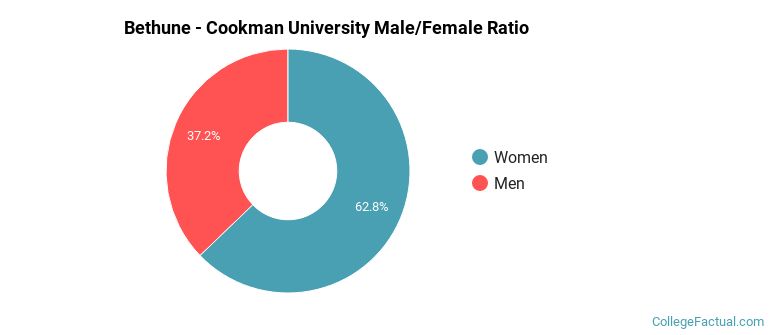
For the gender breakdown for all students, go here.
Bethune - Cookman University Racial/Ethnic Breakdown of Undergraduates
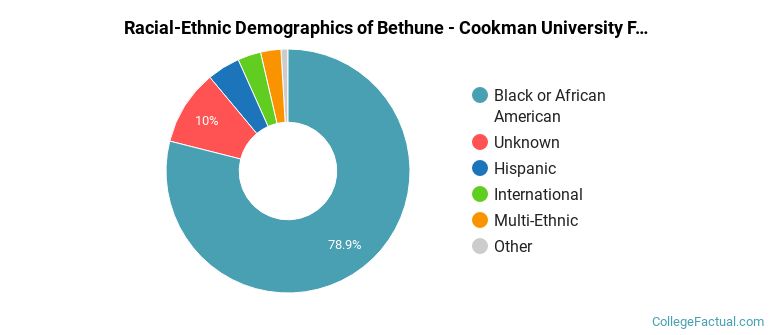
| Race/Ethnicity | Number |
|---|---|
| Black or African American | 2,121 |
| Unknown | 225 |
| Hispanic | 123 |
| Multi-Ethnic | 66 |
| International | 48 |
| White | 22 |
| Asian | 2 |
| Native Hawaiian or Pacific Islander | 2 |
See racial/ethnic breakdown for all students.
Male/Female Breakdown of Graduate Students
About 68% of full-time grad students are women, and 33% men.
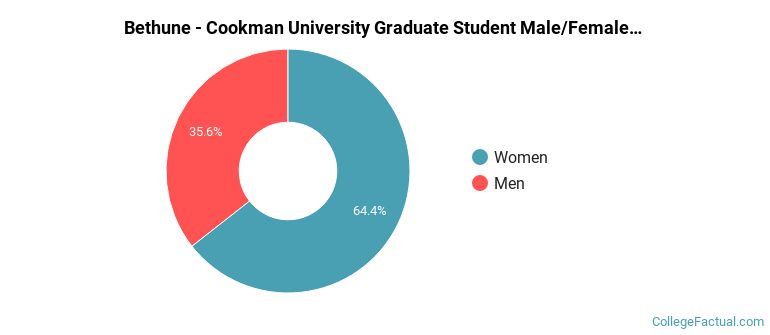
For the gender breakdown for all students, go here.
Bethune - Cookman University Racial-Ethnic Breakdown of Graduate Students

| Race/Ethnicity | Number |
|---|---|
| Black or African American | 63 |
| Hispanic | 5 |
| White | 5 |
| Multi-Ethnic | 4 |
| International | 1 |
| Unknown | 1 |
| Asian | 0 |
| Native Hawaiian or Pacific Islander | 0 |
See racial/ethnic breakdown for all students.
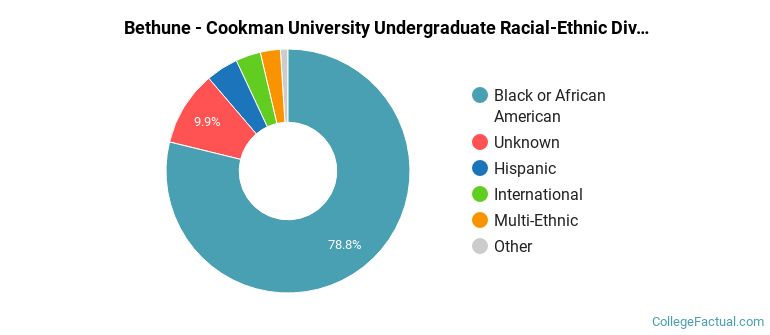
| Race/Ethnicity | Number |
|---|---|
| Black or African American | 2,308 |
| Unknown | 235 |
| Hispanic | 137 |
| Multi-Ethnic | 72 |
| International | 51 |
| White | 32 |
| Asian | 2 |
| Native Hawaiian or Pacific Islander | 2 |
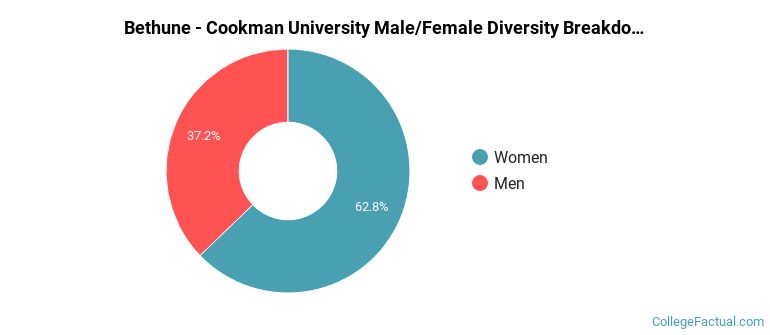
There are approximately 1,813 female students and 1,032 male students at Bethune - Cookman University.
Bethune - Cookman University ranks 633 out of 2,183 when it comes to geographic diversity.
28.18% of Bethune - Cookman University students come from out of state, and 1.29% come from out of the country.
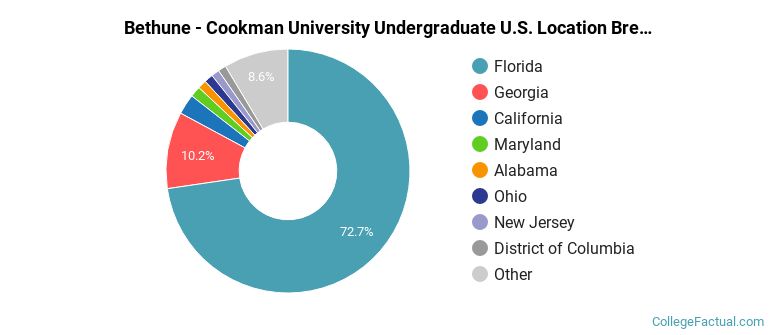
The undergraduate student body is split among 27 states (may include Washington D.C.). Click on the map for more detail.

| State | Amount |
|---|---|
| Florida | 814 |
| Georgia | 114 |
| California | 30 |
| Maryland | 16 |
| Alabama | 13 |
Students from 34 countries are represented at this school, with the majority of the international students coming from Bahamas, United Kingdom, and Colombia.
Learn more about international students at Bethune - Cookman University.
A traditional college student is defined as being between the ages of 18-21. At Bethune - Cookman University, 69.54% of students fall into that category, compared to the national average of 60%.
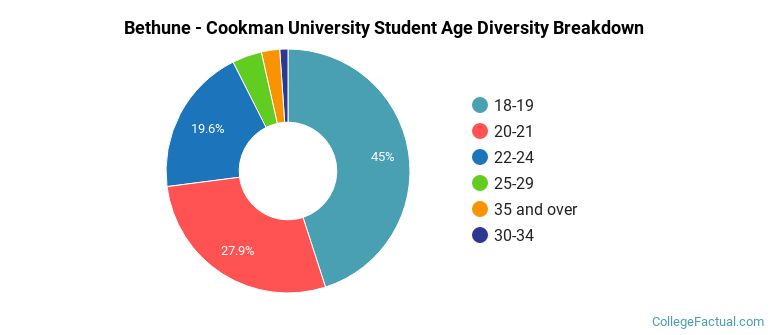
| Student Age Group | Amount |
|---|---|
| 18-19 | 1,778 |
| 20-21 | 1,103 |
| 22-24 | 774 |
| 25-29 | 155 |
| 35 and over | 96 |
| 30-34 | 43 |
| Under 18 | 0 |
Footnotes
*The racial-ethnic minorities count is calculated by taking the total number of students and subtracting white students, international students, and students whose race/ethnicity was unknown. This number is then divided by the total number of students at the school to obtain the racial-ethnic minorities percentage.
References